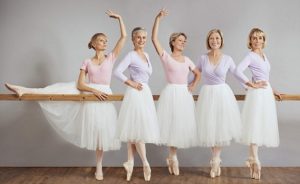 As a dancer I have been interested in not only the athleticism it takes to execute given choreography but also the demands it places on the attention and memory to learn and remember such choreography. Dance, is a unique activity that requires a dancer to learn, remember, and execute a series of complex sequences. As such, dancers are required to retain, retrieve and perform the given sequence.
As a dancer I have been interested in not only the athleticism it takes to execute given choreography but also the demands it places on the attention and memory to learn and remember such choreography. Dance, is a unique activity that requires a dancer to learn, remember, and execute a series of complex sequences. As such, dancers are required to retain, retrieve and perform the given sequence.
Aging is inevitable. Aging is associated with reduction in the volumes of the brain area such as the prefrontal cortex, which is involved in working memory and the temporal cortices, which is involved in vision, memory, language, comprehension. The volume decrease is a result of age – related shrinking of cells that results in a reduction of connections between neurons (a reduction in synaptic density). The good news is that such age- related brain changes are not inevitable and that the ageing brain is capable of forming new neural connections (neuroplasticity). It should be noted that such new neural connections are fostered by a growth factor found in human blood know as Brain – derived neurotpic factor (BDNF). Furthermore, BDNF in the blood is found in higher concentrations after physical activity and even higher concentrations when the physical activity included motor and cognitive challenges. Dance is one example of a physical activity that includes both motor and cognitive challenges, due to the attention, memory and body movements required to learn the complex sequences and movement patterns.
A study by Rehfeld et al. (2018) used the design of a novel dance program that was challenging to its participants, by introducing them to new and increasing difficult choreography through out the intervention. To test whether this new dance intervention was superior to conventional interventions (interventions that involved repetitive movement), it was compared to active well- established sport fitness programs (such as cycling). Do to this, 52 participants (25 males and 27 females) who were between the ages 63- 80 years were randomly assigned to either the experimental group (Dance group) or to the control group (sport). Both groups were controlled for age, cognitive ability (a score of less than 27 was required on the a standardized screening test known as the MMSE) and physical fitness. Both interventions were 90 minutes per session and sessions occurred twice a week for a of six months in duration.
The dance intervention involved a qualified dance instructor to ensure that participants were trained to accurately memorize and access different rhythm and step sequences in space, under accuracy and time constraints. To ensure that new learning took place, the dance group participants learned new choreographies from five different dance genres at the beginning and half way through the intervention. On the other hand, the sport group, who was also supervised by a qualified trainer, performed the same exercise during every session.
After the intervention was completed, the results showed that participants from the dance group exhibited significantly larger volumes in the prefrontal cortex than their sport group counterparts. Specifically, brain regions that are associated with working memory (anterior cingulate and medial frontal gyri) were shown to have the greatest volume increases than the same brain regions of their sport group counterparts. Such differences can be explained by the high demands placed on the dance group’s attentional and working memory processes.
As noted above, BDNF is found in human blood and can foster new neural connections (neuroplasticity). This study showed that during the dance training intervention, BDNF levels were increased in the blood of the dance group participants. The increase of BDNF (which can cause the formation of new neural connections) that is released during an activity that required attention and memory process, such as dance, could underlie the observed volume increase of the above prefrontal cortex, the anterior cingulate, and the medial frontal gyri the observed in the study.
References
Rehfeld,K.,Luders,A.,Hokelmann,A.,Lessmann,V., Kaufmann,J., Brigadski,T., Muller P, Muller,N.G.(2018). Dance training is superior to repetitive physical exercise in inducing brain plasticity in the elderly. PLoS ONE,13(7), E0196636



